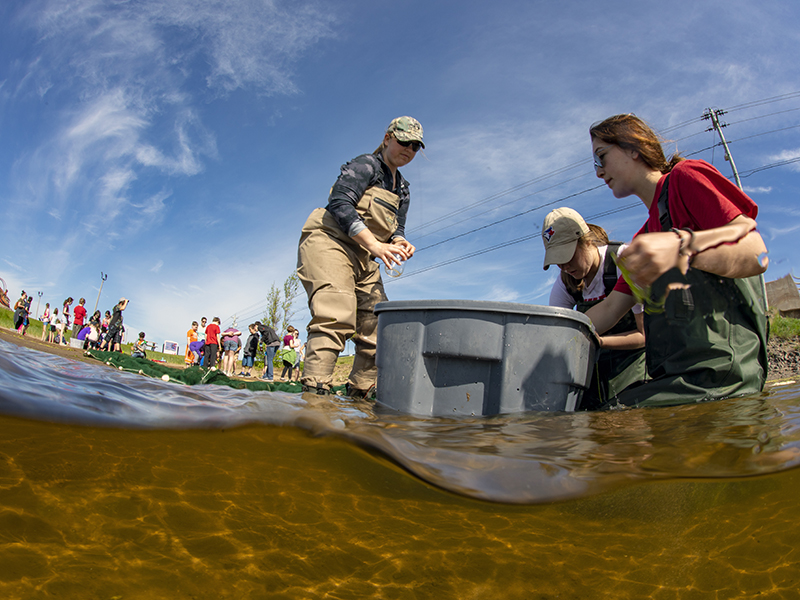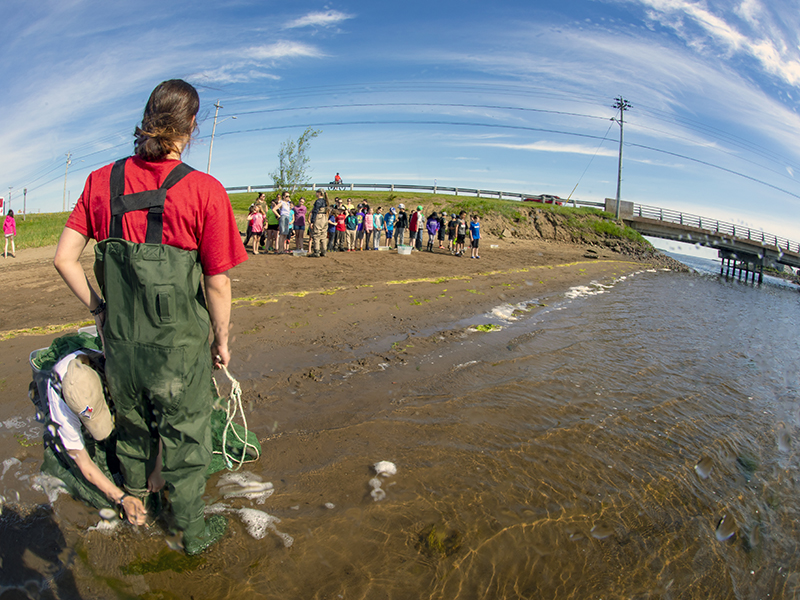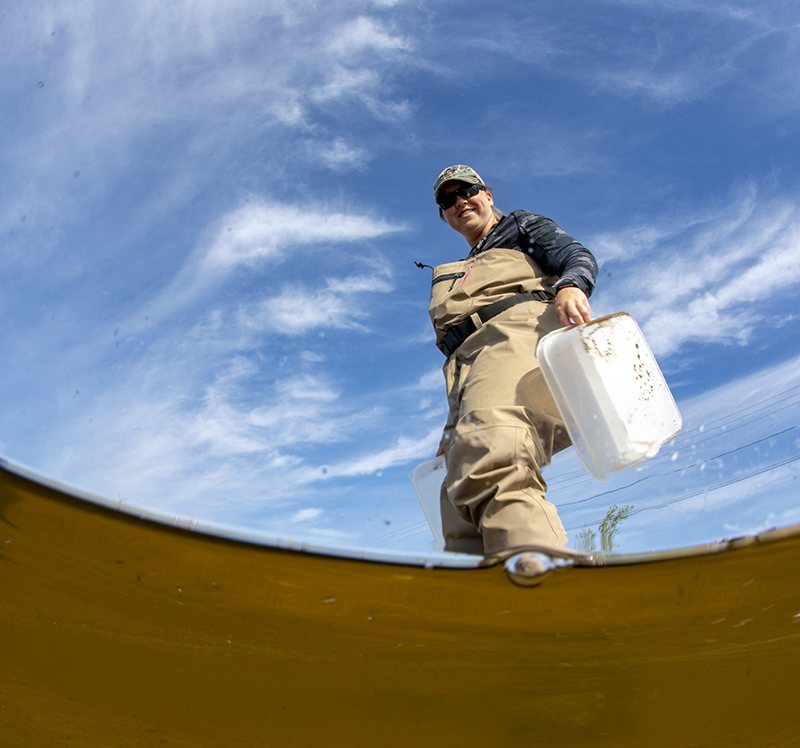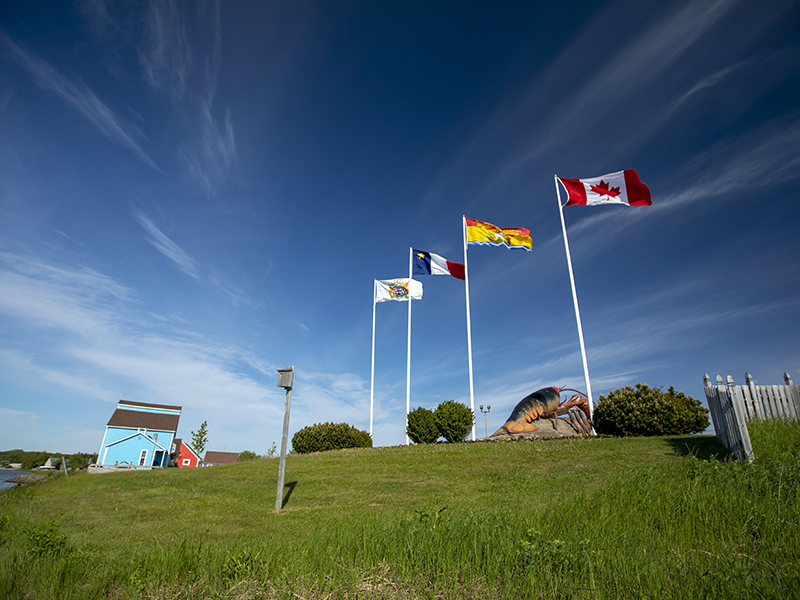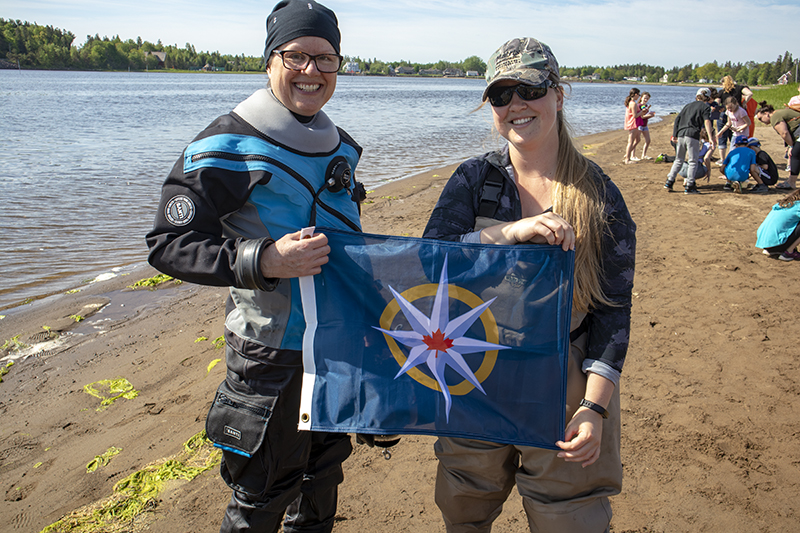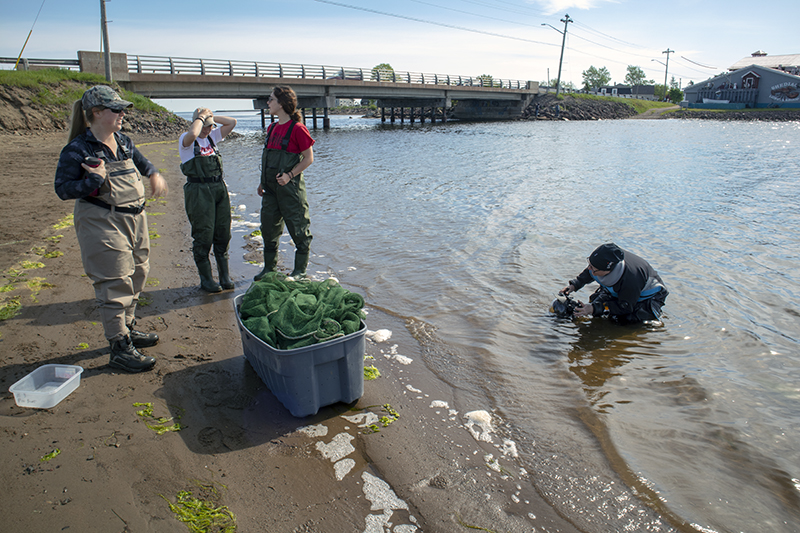Shediac, New Brunswick claims to be home to the world’s largest lobster. The small community is home to an active fishery and bustling tourist community in the summer. They understand that protecting the ocean is key to the economic success and culture of the region. We meet up with three women from the Shediac Bay Watershed Association who are conducting outreach with local school kids. The active non-profit organization works to protect the bay, fostering a healthy ecosystem in a way that is sustainable for future generations. They conduct cleanups, research, restoration and outreach initiatives and have a special interest in working with young people who might not have had a chance to truly connect with their ocean environment. Today they are using a net to capture fish to populate small basins that will permit the 4th graders to touch the sea and its inhabitants. The three scientists obviously love their job. Jolyne Hebert laughs and smiles as she leads her two coworkers dragging the net across the shallow approach to a narrow bridge. She steers me away from the wrong side of the net. “Don’t scare away my fish,” she advises while I snap away at photographs of the women at work. They carefully haul the net to shore and gently place fish into a large perforated bin that is awash with the water from the inlet. Later, supervising small plastic basins, they show the kids shrimp, crab, and small fish, while they talk about behavior, feeding habits and conservation. At the end of a raucous hour of engagement, the children help return the creatures back to their home in Shediac Bay. The enthusiasm is infectious. Many kids have never seen a shrimp that wasn’t drowning in garlic butter. Watching it swim is a revelation.
As an environmental advocate, I understand the importance of engagement. Helping someone to touch the sea is far more meaningful than passive viewing of two-dimensional media. These experiences build stakeholders for the protection of natural resources.
